Around the Thanksgiving holiday, a lot of decorations and advertisements feature a similar image of a turkey: It’s often a big male turkey, all puffed out and in full strut. And we all know that turkey’s saying “gobble gobble.”
If you were lucky enough to see a turkey in the wild on Thanksgiving Day, there’s little chance it would be puffed up and strutting, nor would it be gobbling. Those are primarily the spring breeding displays of male wild turkeys.
In the fall, wild turkeys behave quite differently. So how do wild turkeys spend Thanksgiving Day? Here’s a look at their fascinating behavior during autumn.
Turkeys of a Feather…Flock Together
My first wild turkey sighting came on a late fall day in the mid-80s, when I was deer hunting with my dad. We were about ready to call it a day, looking down into a wooded hollow in Central Pennsylvania. Suddenly, a line of dark forms appeared, moving slowly through the woods, stopping and looking every few steps.
At the time, turkeys were still a rare sight in our part of the state. (In fact, many friends and relatives doubted our story). I recall how big, how beautiful, they looked moving through the hardwoods. But what I mostly remember is how quiet they were. Leaves had piled on the forest floor, loud and crunchy. A lone squirrel sounded like a snowplow when it jumped around. But these turkeys scarcely made a sound.
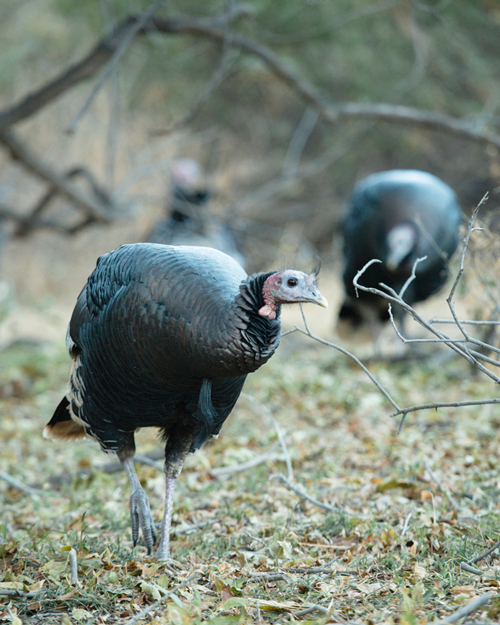
I’d later learn this silence was actually unusual. A flock of turkeys in the fall can be extremely noisy while calling and scratching. On that day, the first day of Pennsylvania’s popular deer season, the woods were full of people, and the turkeys were stealthy and alert.
As a hunter and naturalist, this encounter launched a lifelong interest in wild turkeys. I’ve spent a lot of time observing them. I’ve seen plenty of gobbling and strutting in the spring. I’ve seen turkeys mating, fighting, feeding, roosting and tending chicks. Their spring behavior gets all the attention, but I always find a special thrill watching them in the autumn.
The first thing to understand about fall turkey behavior is the social structure of flocks. Basically, turkeys of a feather flock together. Hen turkeys live in flocks with their female offspring. Oftentimes, several hens and their offspring will combine flocks, so it’s quite common to see 50 or more birds together. The Cornell Lab or Ornithology reports that some winter flocks can consist of 200 turkeys. Hens that were not successful hatching chicks may form smaller flocks with similar lone hens.
Male turkeys form their own flocks. Depending on population size, these too might be segregated by age classes. Young male turkeys, commonly called jakes, band together, and older males form their own groups.
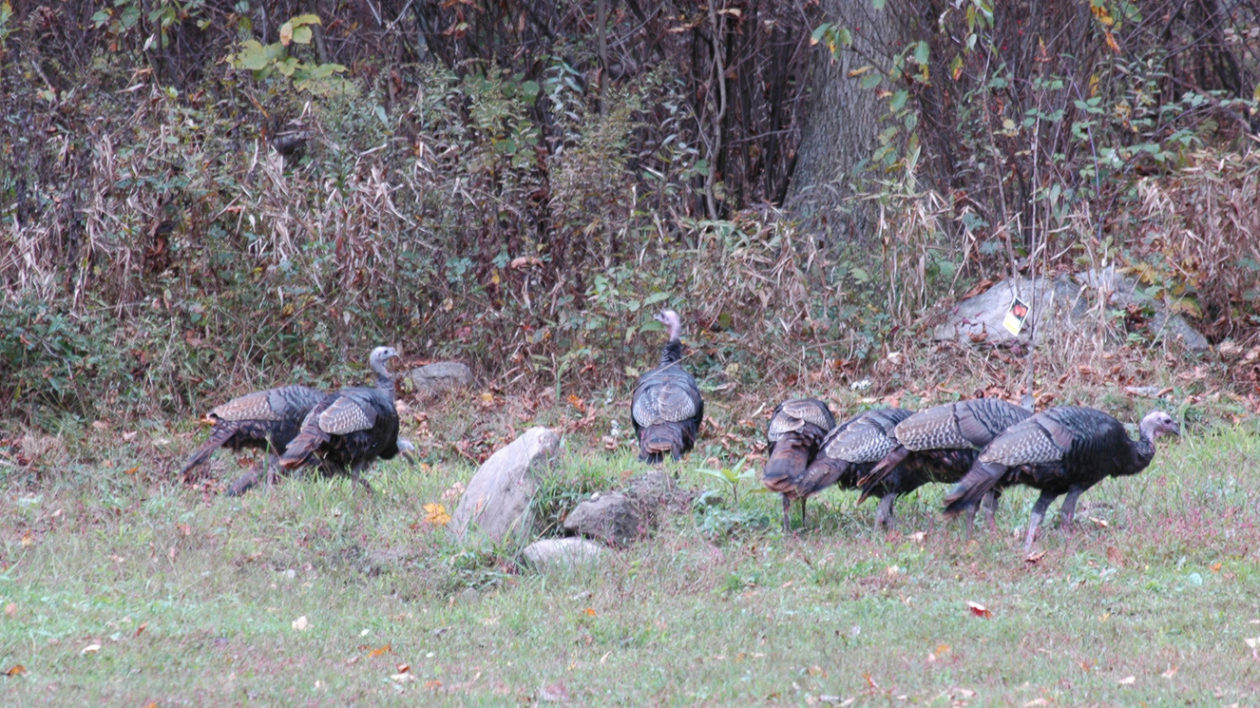
All these turkey flocks will likely be located in different parts of a forest. They don’t interact much at this time of year.
They do interact with each other within a flock. At this time of year, turkeys are always with the flock and call constantly each other to ensure they’re close by. They feed and call, feed and call. These calls are all quite soft, but you can often hear them in the hardwoods if you listen closely.
Say you’re out for a hike and you stumble into a flock of turkeys. They’ll run and fly in every direction. But within minutes, they’ll begin calling. Loudly. Hens make a harsher yelp, while young chicks give a higher-pitched call, often referred to as the kee-kee.
Sustainable Fare
What will be on your Thanksgiving table?
They will call to each other until the flock is reassembled. This may suggest an idyllic picture of a fall turkey flock, but let’s not get anthropomorphic. An important aspect of flock life is establishing dominance. Both male and female turkey flocks in the fall are full of squabbles, dominance displays and even fights – all establishing who is at the top of the pecking order. This is important in determining breeding rank come spring.
Occasionally, you will even hear a particularly aggressive male turkey let out a full-throated gobble. This is again establishing dominance, but it’s far less common than in the spring, when male turkeys gobble loudly and frequently.
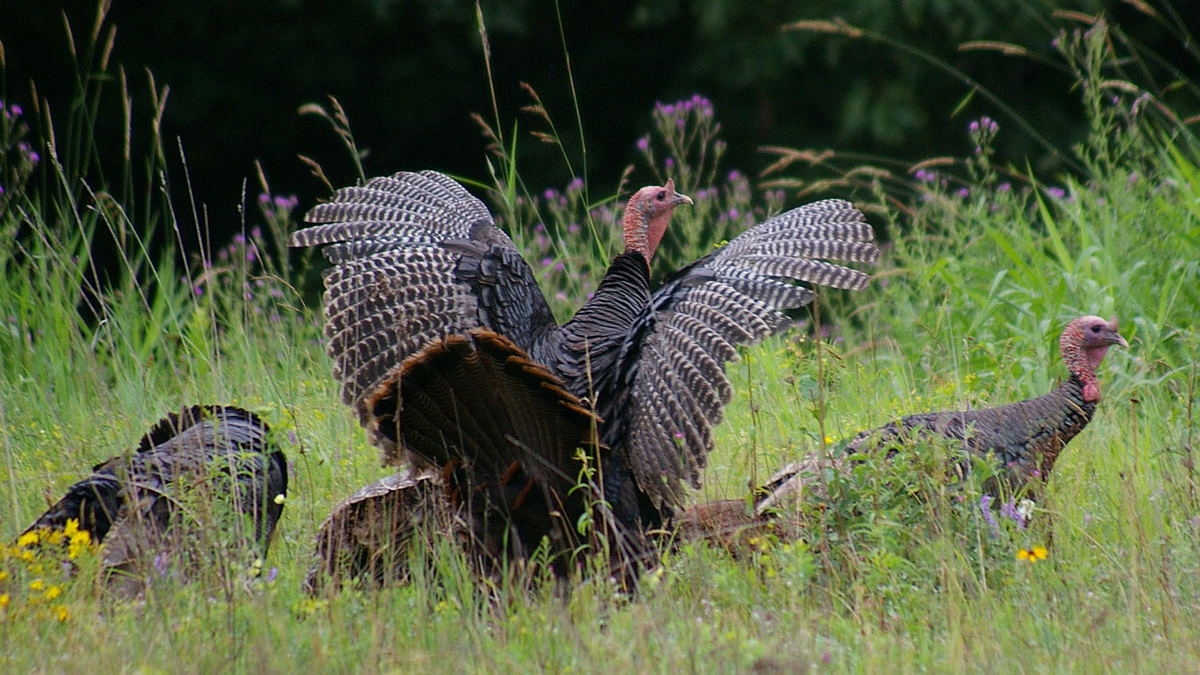
Of Acorns and Roost Trees
Turkeys are quite habitual at this time of year, often living in a defined area and even following a similar route each day. As with all wildlife, where they’re found is determined largely by food and cover.
Turkeys are noted omnivores, as ornithologist Joe Smith has written previously on Cool Green Science. They’ll eat everything from fruits to frogs. But they do have preferred foods. In the summer, they can often be found in meadows, feasting on grasses and insects like grasshoppers.
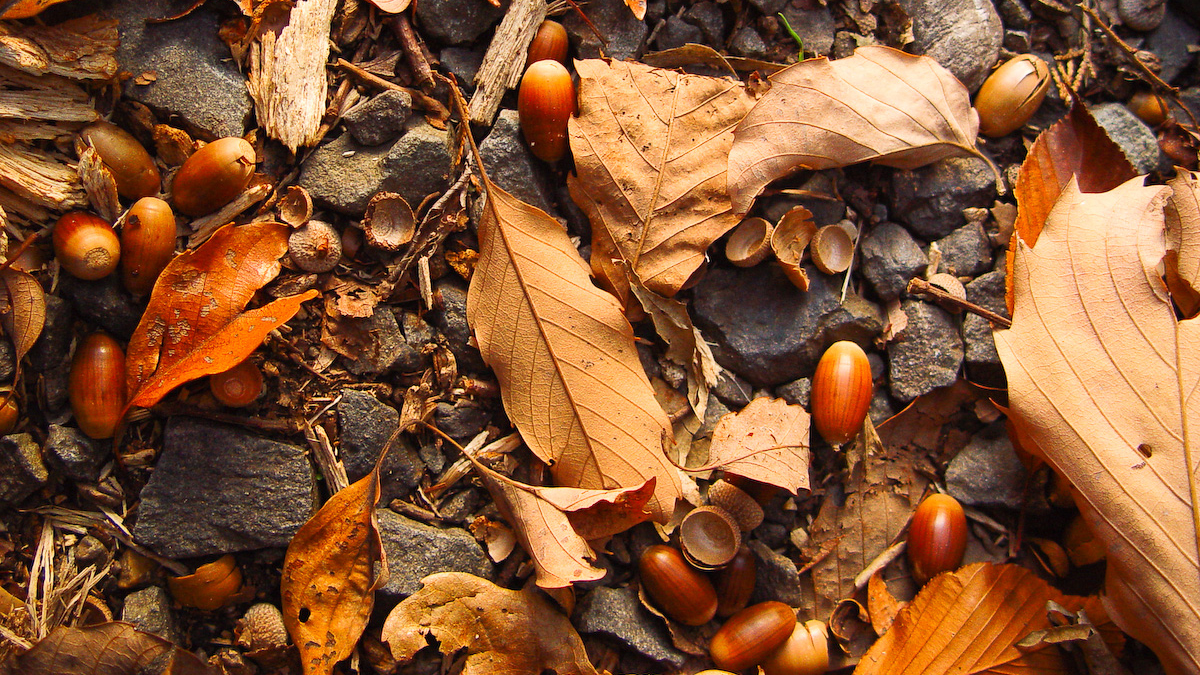
In the fall, they will still haunt fields, particularly those with dropped corn or grain. But in much of the turkey’s range, they shift to the acorns and nuts – called mast by land managers – of hardwood forests. Flocks may move several miles to find acorn-rich environments. Acorns are calorie rich and turkeys spend a lot of time feasting.
In fact, I often hear them scratching long before I hear them calling. They dig through the leaves, with often large bare spots of ground remaining. These scratchings are a great way to locate a fall turkey flock.
Turkeys are very alert birds, with excellent eyesight. In the daytime, it would be difficult for a predator to stalk a flock of 30 turkeys. There’s always at least one scanning the forest. But when they rest at night, they’re vulnerable. A turkey is a large, protein-rich dinner for a coyote, fox or bobcat. And so the turkey roosts in trees, where it’s safe from ground-dwelling predators.
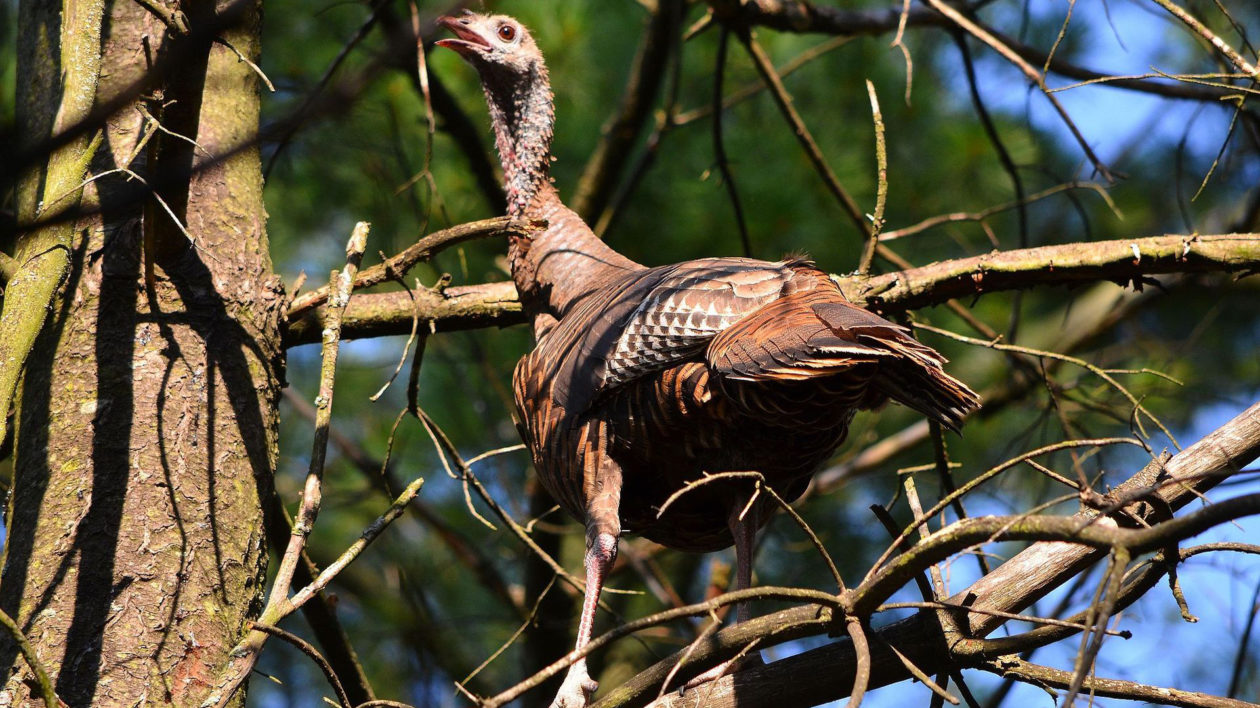
A turkey is a big bird, and it needs fairly large trees for roosts. I have noticed that gobblers, in particular, seem to roost in huge trees with a great vantage point, like on a ridge or along a river. I haven’t seen any literature to back that up, but it’s been my observation in a variety of habitats.
Turkeys can fly surprisingly fast in open terrain, but maneuvering is not necessarily a strength. I always find it entertaining to watch them fly off a roost at dawn. Some will fly over my head with an audible whoosh, sounding like a hang glider. But many will bounce into branches and trees as they descend to the forest floor, a true crash landing.
If you find a patch of forest with plentiful acorns and some large trees, nearly anywhere in the United States, chances are there are some turkeys nearby.
Given their fall antics – the scratching, roosting, and dominance fights – they’re spectacular birds to watch. Since they’re abundant, and increasingly found even close to towns and cities, turkey spotting is a widely available adventure. You will need to be extremely quiet to catch a glimpse.
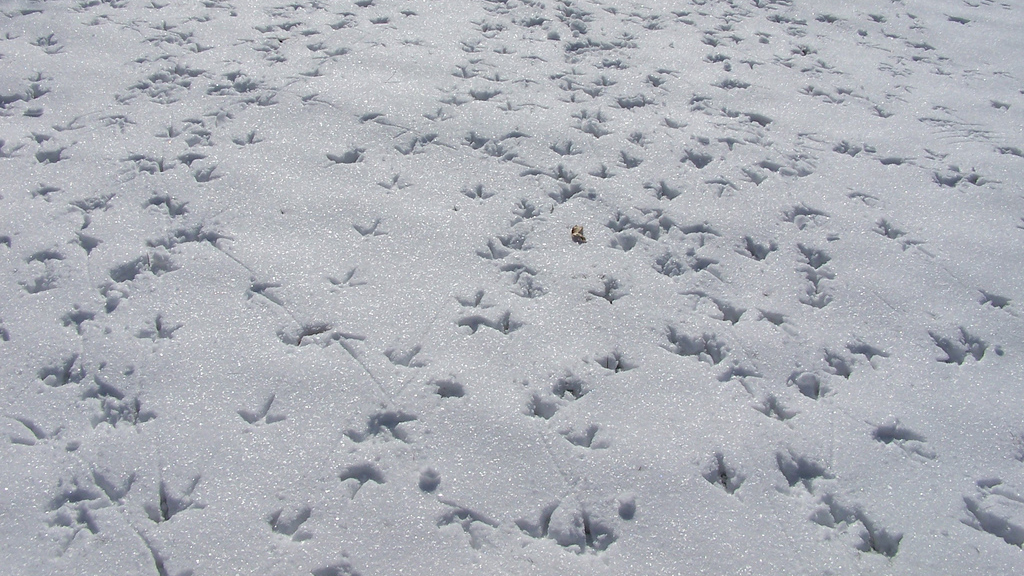
If you’re lucky enough to have a slight snow fall, a flock of turkeys is also easy and fun to track. Their large feet are unmistakable, and due to the large number of birds moving together, they’re incredibly easy to follow. You will see how the individual birds move, sometimes straying a bit too far, then moving back. You’ll see lots of scratchings and perhaps where wings brushed snow during fights.
Follow along and you’ll see exactly how turkeys spend their days.
If you’re looking for a great adventure for Turkey Day, head outside for one of the greatest shows in the woods.
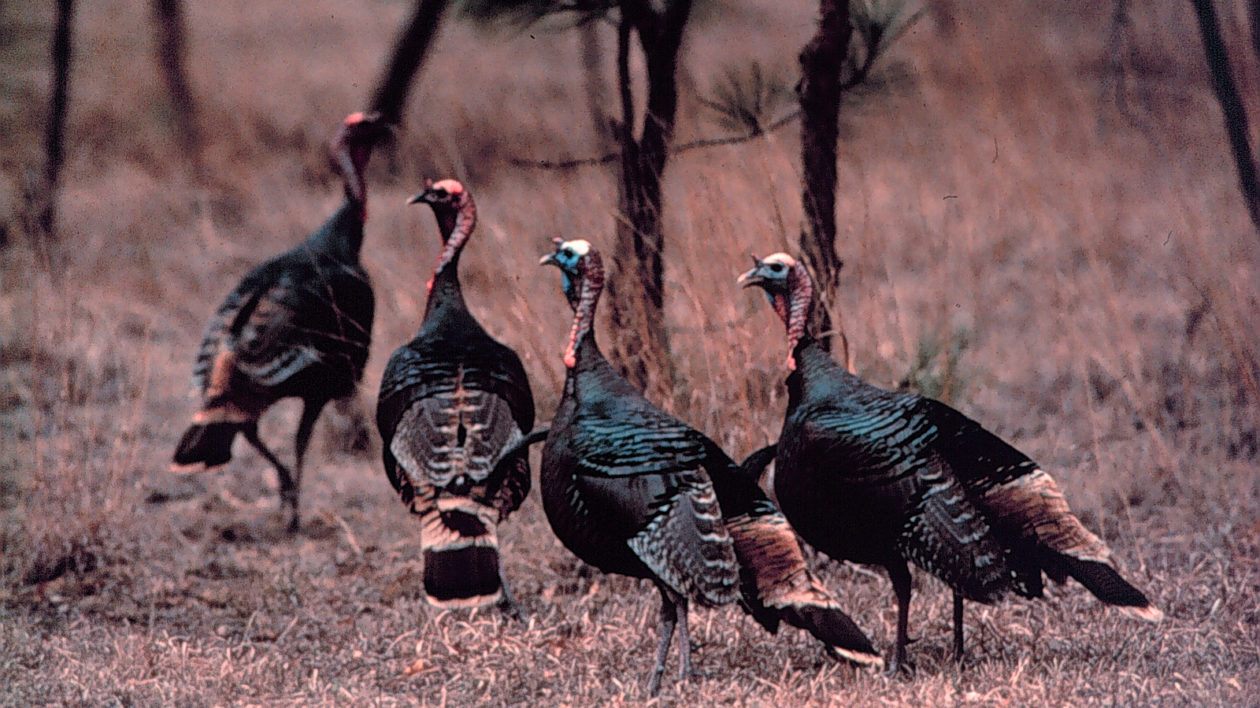
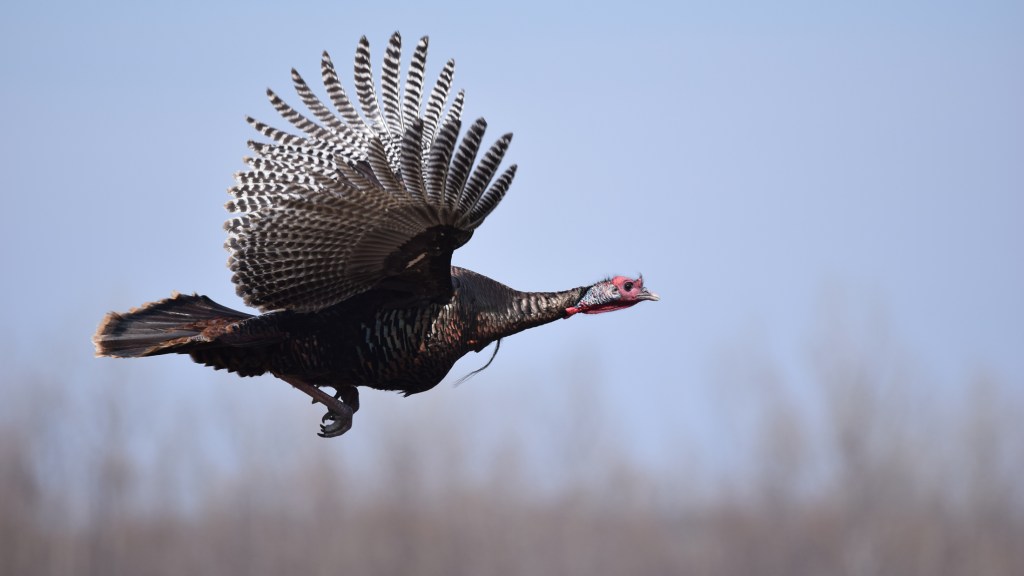



I have a flock of about 30 in my yard almost every day. I enjoy watching them. They didn’t look like they could fly. I was surprised when while watching one day one started running, and took to the wing, then the rest did likewise. They flew up into some trees, and after about two hours of jockeying for position they settled down for the night. I live in the mountains, at four thousand feet
This is a really great article! Presently we have 3 hens(?) in our neighborhood. They come into our yard multiple times during the day to eat birdseed off the ground from various birdfeeders. Today two of them were on my neighbor’s shed roof and acted as though they were mating. The largest one of the three kept strutting around the smallest one, fanning her tail, and flapping her wings. The smallest one was also circling but would lie down and make herself very flat. This continued for about 10 minutes. They finally flew off the roof and came into our yard to the birdfeeders. I know they should be in groups of either males or females this time of year, so why would they behave like that? We are located in the Lehigh Valley area of PA in a housing development and have had fall turkeys off and on for the last few years. They are really entertaining!
Got plenty of these birds in Cherry Hill, NJ. Off Springdale Road. Weird birds, but so far not dangerous.
Really enjoyed your observations and comments. I own 100 acres in Indiana near the Wabash river and observe around 20 year round. Love watching them on trail cams.
Our turkeys (in Prospect, Maine) breed more than once a year. They breed in the late fall/early winter, often scratching those wing feathers against crusted snow on the ground and making a bit of a racket. And they seem to remain in their courting action for a long time ~ especially in the Spring. Our turkeys (who feed on bird seed, in our back yard) have been puffed and strutting now since March. That’s March, April, May and June!
I am left wondering if their habits are altered because of the food so readily available to them, which my husband throws out on the ground, daily.
we have a tom turkey who comes to our bird feeder for food in the mornings. (I throw food on the ground for him.) He’s very big and clearly a mature male. My question is this: why would he hang around our house all day? He gobbles and preens and then settles down in the grass for the entire day. All alone. We live in central Massachusetts near Worcester; we have an open field and wooded areas around that.
I really enjoyed your view and knowledge on the Turkeys. I have had the opportunity in the last year to enjoy them myself and offer a partial peaceful and safe haven to hang out and eat. They are very beautiful and the male in his changing of color and appearance in moments is fascinating and shows us the wonders of the world and gods creatures.
Great article!
Have you ever seen a flock of turkeys rush to the aid of a turkey wounded by a hit by a vehicle? Saw it today.
I live in southern Oregon. In the fall we have about 2 dz that graze in my yard every day. Come winter they disappeared not one can be found for miles. Where do they go? There’s plenty of food and cover. People are always asking me where’s your turkeys . I have no clue.
Any idea what happens to theses mega groups of land fowl? Thanks Bob
Hi Bob,
Thanks for your question. Turkeys can move to completely different areas, especially seasonally. It seems that, in the western US, turkeys move over greater distances. I have noticed this in Idaho, where I live. They move around mountains quite a bit, and “disappear” for periods of time. In the eastern US, they do not seem to be so wide ranging.
Matt
Three weeks ago…Plymouth Mass. an injured (?broken leg) tom settled in my back yard ..I live near a
nature preserve….many pine trees…..Breaks my heart..has the flock abandoned him ? How will he survive winter ?? Yes I am over top animal lover…so…is he lonely ?? Feed him every day to help heal per wilderness authority..he is now taking water..cannot seem to lie down or “perch”..can fly for about 20 foot elevation ..when frightened…does let me throw him bread and peanuts from about 5 feet away..still getting around on one leg..he is getting stronger but winter is here..will he survive without the flock and broken leg??? How will he find a winter habitat??? Thank You He is eating well but do broken legs ever get stronger?? I realize it will not heal as normal but worried about future…..does not appear to be in pain..animal control here had me watch for that..oh…no flock for weeks also..
Thanks for your comment and question. Turkeys are pretty resilient creatures. An injured leg does make this turkey vulnerable to predators and makes it more difficult for it to get around. It is not unusual for a flock of birds to turn on an injured member (this happens with my backyard chickens). Surviving is a tough business, even for thriving turkeys.
There is a lone turkey hanging out in a Kroger parking lot. He’s been there about a month. I fear he’s going to get hit. Is this a normal behavior. Should I try to catch him a relocate him on my farm
Hi Marjorie,
Thanks for your question. Turkeys are quite adaptable with more of them moving into suburbs. While one hanging out in a parking lot is unusual, I suspect the turkey will fend for itself if there is food and cover nearby. It may have found that the parking lot offers what it needs while providing protection from predators. In general, if wildlife isn’t injured, it is better to let it survive on its own.
Matt Miller
Enjoyable article. In my neighborhood, there is or are several flocks of Turkeys which has grown considerably over the last 5 years. The birds are fun to watch and are comical at times. There is also a small herd of deer which mingles with the turkeys as they forage for food before the snow falls. I also enjoy watching the turkeys shake berries, from our neighbor’s trees, in order to feed the flock.
I’ve hunted and worked as with wild turkeys all my life, and this piece is a good life history summary.
Hi, Matt:
We have spoken before, and I am very grateful for your guidance and information. Thank you, my friend.
Recently, my flock of four – which may or may not be a part of the original thirteen, have apparently driven one of the critters away.
Yasmin – I gave her a beautiful name because my heart absolutely breaks watching her all by herself in my backyard. It doesn’t seem natural.
Why would this happen, and how can I help Yasmin to survive on her own?
Thanks, Matt; it’s always to hear your advice.